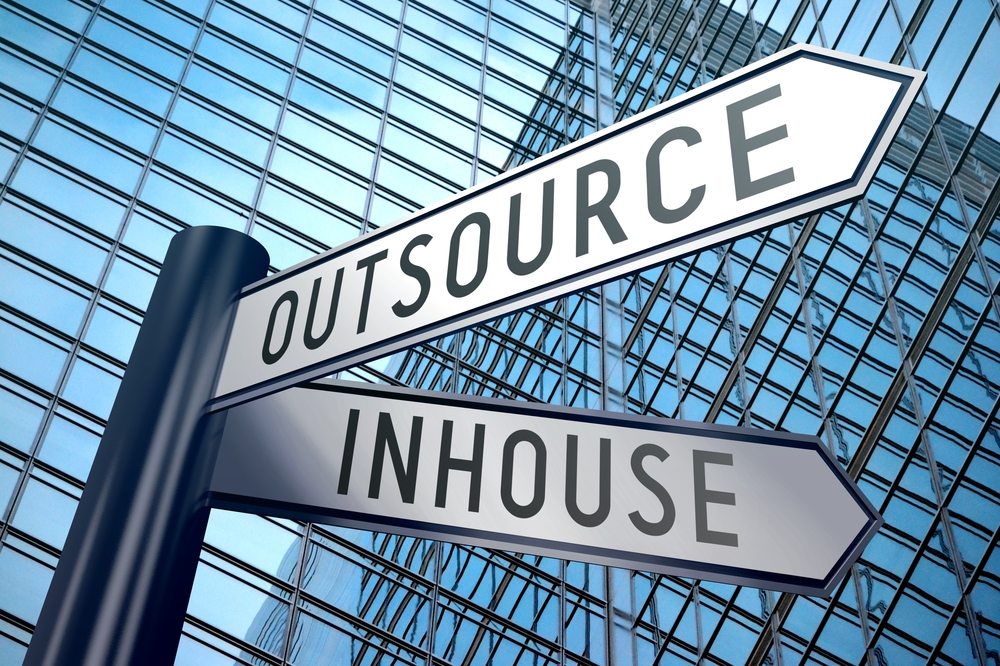

When running a business, one of the big decisions you’ll face is whether to outsource certain functions or keep them in-house. Each approach has pros and cons, fromlogistics and courier services to digital marketing. Let’s look into the essential factors that will assist you in determining what is most suitable for your company.
Related Reading: Unlock the e-commerce boom: Trends and strategies in the UAE and GCC
What do we mean by outsourcing and in-house?
Outsourcing involves hiring an external provider to manage specific tasks or operations. Think of it like passing the ball to a specialist who’s great at scoring goals. This could be anything from working with a logistics service provider to handle deliveries to outsourcing your marketing efforts to an agency.
In-house, on the other hand, means keeping everything within your business. You’re running the show, calling the shots, and relying on your team to deliver. It’s all about control, but it comes with its challenges.
Why your choice matters
Deciding to outsource or keep things in-house isn’t just operational – it’s strategic. It affects your costs, flexibility, and ability to adapt quickly to market changes. Make the right choice and boost your efficiency and competitive edge.
The case for outsourcing
Outsourcing can be a game-changer, especially for businesses looking to tap into specialised expertise or scale up quickly without committing to full-time hires.
Advantages:
- Cost savings: Outsourcing is often cheaper than hiring in-house. For example, partnering with a courier service provider means you avoid the costs of maintaining a logistics team. You’ll save on salaries, training, and infrastructure.
- Expertise on tap: External providers often bring industry knowledge and innovative solutions that might be beyond your team’s capabilities. Whether it’s an experienced digital marketing agency or a seasoned logistics partner, you’re gaining access to a wealth of expertise.
- Flexibility and scalability: Outsourcing allows you to scale up or down as needed. This useful for businesses with fluctuating demands, such as seasonal peaks.
Challenges:
- Less control: Handing over parts of your business means you’ll have less direct oversight. You’ll need to trust your partner to maintain standards.
- Quality variations: Not all providers are created equal. It’s essential to vet them thoroughly and set clear expectations.
- Communication hiccups: Working with external teams can sometimes lead to delays or misunderstandings, especially in different time zones.
Related Reading: Sustainable sourcing: The secret to building a brand consumers love
The Case for in-house
Keeping operations in-house gives you greater control and allows you to build a fully aligned team with your business values and goals.
Advantages:
- Total control: You’re in charge of the processes, the pace, and the outcomes. This can be particularly useful for areas like branding, where consistency is key.
- Cultural alignment: Your company’s in-house team is immersed in its culture and mission. This alignment can drive innovation and foster stronger connections with your customers.
- Clear communication: With everyone under one roof, it’s easier to collaborate and resolve issues quickly.
Challenges:
- Higher costs: Salaries, training, office space – it all adds up. For smaller businesses, this can be a significant financial burden.
- Skill gaps: Your team might not have the specialised knowledge needed for specific tasks, requiring additional training or external consultants.
- Scaling issues: Expanding your in-house team takes time and resources, which can slow you down during periods of rapid growth.
Related Reading: How to achieve streamlined workflows with the best productivity tools
How to decide
Choosing between outsourcing and in-house isn’t a one-size-fits-all solution. It depends on your business needs, resources, and goals. Here’s how to approach the decision:
- Assess your needs:
- What’s the cost of hiring in-house compared to outsourcing?
- Do you need specialised skills that your current team lacks?
- How much control do you want over the process?
- Consider a Hybrid Approach:
- Sometimes, a mix of both works best. For instance, core functions like branding should be kept in-house while outsourcing logistics or marketing.
- Evaluate and Adapt:
- Whichever route you choose, regularly assess its performance. Be ready to pivot if it’s not delivering the results you need.
- Manage Risks:
- With outsourcing, choose reliable partners and set clear terms. For in-house, plan for potential challenges like employee turnover or resource shortages.
Key takeaway
Deciding between outsourcing and in-house isn’t just about costs; it’s about aligning with your long-term vision. Both approaches have strengths and weaknesses, and the right choice often depends on your unique situation.
Remember, the key is flexibility. Your business will evolve, and so will your needs. Whether you outsource, stay in-house, or find a balance between the two, the goal is to create an efficient, agile operation that sets you up for success.
Enhance your logistics. Contact usfor scalable logistics support!




